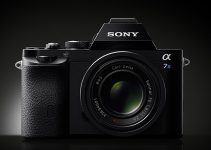Regardless of the excellent overall video quality one can get from the Sony A6500 camera, the severe rolling shutter artifacts are still one of the biggest drawbacks of this otherwise fantastic compact camera system. If shooting in 1080p makes the issue just not as pronounced, things can get really messy and wobbly once you switch to shooting in 4K.
In fact, the camera’s 24.2MP APS-C Exmor CMOS sensor has some of the slowest readout speeds in the industry which makes the problem a real deal breaker and a serious flaw that could potentially ruin all your creative effort if you’re not paying close attention. Of course, there are certain workarounds that could help you to tackle the issue, so let’s explore some of those options.
Using some stabilizing system or other support gear on set could eventually reduce the jitter artifacts in a way. The built-in 5-axis SteadyShot Image Stabilization could also help, but again, only to a certain degree. Probably, the safest option you have, especially when shooting with the camera hand-held, is to film in 1080p.
But if you end up with some distorted clips despite all your hard effort on set, you can still try to save your work by using the Rolling Shutter Repair tool in Premiere Pro CC. As you can see in the video above, this tool is an incredibly powerful asset as it can do some great job in that regard.
The only downside of this workaround is the fact that the effect needs loads of computing power to process your footage hence why Christopher Burress suggests using the tool just before you render your edit instead of applying it at the beginning of your workflow.
Typically, the Rolling Shutter Repair tool can be used to remove even the most challenging distortion artifacts caused by the time lag between scans of your camera’s CMOS sensor. After applying the effect, you should tweak the Rolling Shutter Rate. This setting specifies the percentage of the frame rate which is the actual scan time. All you have to do is adjust the Rolling Shutter Rate until distorted lines become vertical.
Furthermore, you can tweak the direction that the rolling shutter scan takes place if required. Most cameras scan the sensor top-to bottom. However, if you operate a camera upside down or rotated, you’ll need to play around with the Scan Direction setting to improve the final image.
Besides that, the plugin provides an advanced section that gives you even greater control over the process as you can opt for performing a more precise optical-flow analysis or specify how detailed the optical-flow vector field computation should be when using the Pixel Motion method. Nevertheless, this tool doesn’t aim to be the ultimate rolling shutter fix, but at least gives you a chance when you need to deal with these atrocious artifacts, especially when you’re in a pinch and there’s nothing else you can do.
[source: Christopher Burress]
B&H Order Link:
Sony Alpha a6500 Mirrorless Digital Camera (Body Only)
Amazon US Order Link:
Sony Alpha a6500 Mirrorless Digital Camera (Body Only)
Disclaimer: As an Amazon Associate and a participant in other affiliate programs, we may earn a small comission from qualifying purchases made through some of the links on this page - at no additional cost to you.





Maybe your article should also mention that the a6500’s 1080p image is absolutely unusable thanks to line skipping – the resulting color moiré and aliasing is so bad it makes the 5D2 look good. Even though the specs are tuned to make a very good impression on kids as “my first Sony” ?? , every serious shooter should stay away from this pos for video work. It’s a very capable stills camera, but that’s about it.
Yes there are major issues but who’s going to notice besides the filmmakers? We use the A6500 all the time and none of our clients will ever know what moire and aliasing even is. It shoots a good picture and our clients are happy so who cares.
But the 5d2 image is good…not sure your point there. A comment like that just shows you are overly pixel peeping. I have and use this camera all the time for professional work and have no issue. Why? Because I am in fact a professional, which allows me to understand how to compensate for the cameras shortcomings. Most people never notice rolling shutter or banding for that matter unless they are trying to find it.